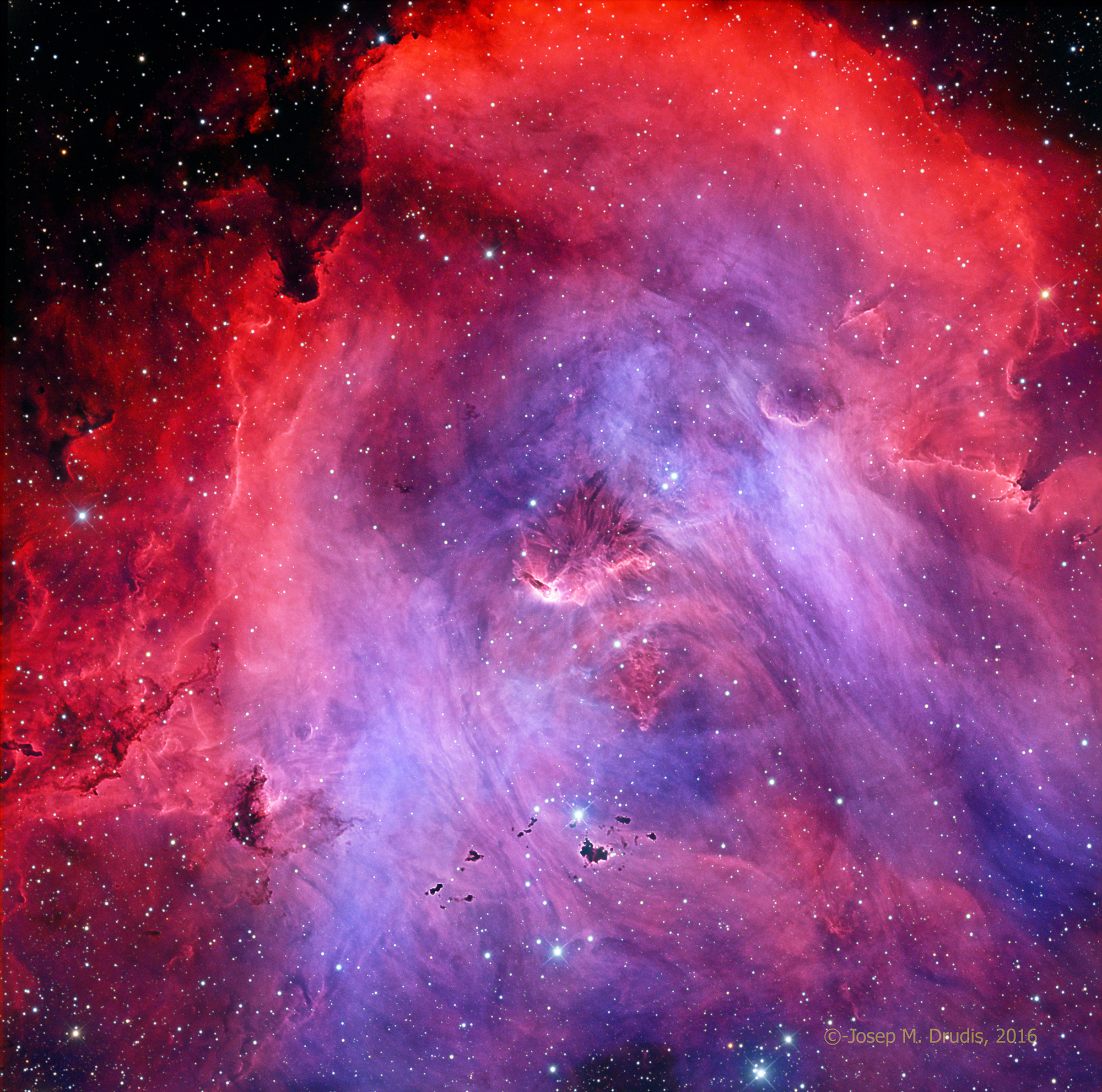
Click on the image for a larger version
IC 2948, also known as the “Running Chicken Nebula”, is usually described as “almost featureless emission nebula”. True as it may be in RGB images, this emission nebula is very rich in details and with a remarkable 3D appearance in narrowband images. This nebula, located in the constellation Centaurus, was not discovered until the beginning of the 20th century (1908). It has a very low surface brightness, and one of its most remarkable features is the presence of several “Bok globules”. These globules are small dark nebulae that contain molecular hydrogen gas as well as helium and variable amounts of silicate dust (usually around 1-3%). The globules are associated to star birth, and quite frequently (about 40% of the cases, according to Launhardt et al.) they provide double or multiple stars. None of the globules in this nebula has been detected in the active process of generating a star. The first astronomer to describe them was Bart Bok (together with Edith Reilly) in 1947 (Astrophysical Journal, vol. 105, p.255). The globules in this nebula were discovered by David Thackeray and are also known as “Thackeray’s globules”. The associated open cluster powering the emission nebula is IC 2944, also known as Caldwell 100. It is also remarkable the emission in OIII wavelength, seen here as blue wisps. This image has been processed trying to reproduce the original spectrum of the nebula.
This image has been selected as AAPOD (Amateur Astronomy Picture of the Day) on September 25, 2016: http://www.aapodx2.com/2016/20160925.html
Additional Information
Object
Name(s): IC 2948. The Running Chicken Nebula
Type: Emission Nebula
RA: 11h 38m 48s
Dec: -63º 31’ 55”
Constellation: Centaurus
Size (arcmin): 75×50
Magnitude: +4.5
Distance: 400 ly
Image
Date: 2016-03-02 thru 2016-03-30
Location: iTelescope.net, SSO near Coonabarabran, NSW Australia
Size (arcmin): 37×36.5
Telescope: Planewave CDK 20” f/6.8
Camera: SBIG STX16803 (4096x4096pix)
Guiding: Astrodon MonsterMOAG off-axis guider
Total exposure: 12.5 hours (Ha: 5.5 hours; OIII: 5.5 hours; RGB 1.5 hours -only for the stars)
Processing: CCDStack, Photoshop CC 2016